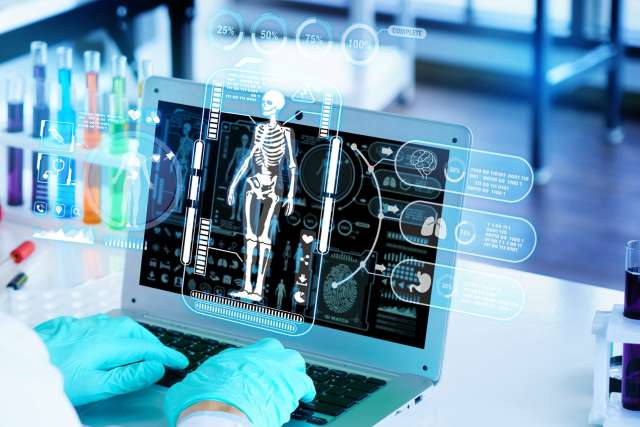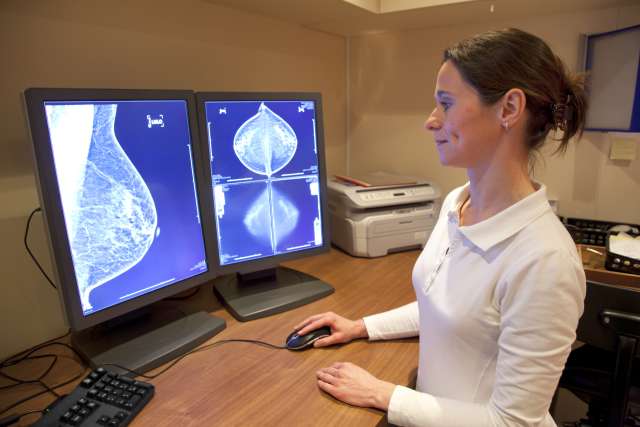Body weight is easy to measure and can be captured wherever there’s a scale: in your bathroom, at the doctor’s office, in the local gym. Along with other baseline measurements, such as temperature, blood pressure and heart rate, that number is used to assess a person’s overall health.
But for a fuller picture, it’s important to measure “not how heavy the body is, but what is making up the body,” according to Tamara Horwich, MD, MS, health sciences clinical professor of medicine and cardiology at the .
That means looking at body composition, which gauges the mass of different elements of the body: fat, muscle and water.
“There’s a growing recognition that when we talk about weight, we should really be focusing on body composition,” said Dr. Horwich, who is also co-director of the UCLA Health Women's Cardiovascular Center. “It gives us a much more nuanced picture of someone's cardiometabolic health.”
Dr. Horwich uses body composition measurements as a tool in her clinical research. Especially for women, the quality and distribution of muscle and fat are related to the risk of cardiovascular disease – the No. 1 cause of death in the United States for both sexes.
“Higher levels of muscle were associated with lower risks,” said Dr. Horwich. “And higher amounts of visceral fat were associated with higher risk.”
Types of muscle and fat
Dr. Horwich said there's growing awareness of body composition but “it hasn't trickled down to the full medical field into every doctor's office.”
One practical and safe method for determining body composition uses a technology called bioelectrical impedance analysis. When a patient steps onto the machine and grabs two handles at its top, it sends weak electrical currents at different frequencies through the body. The currents meet different levels of impedance – a concept similar to resistance – depending on whether they hit fat, muscle or water. The machine measures the impedance and estimates the mass of each element in about a minute
It also distinguishes between types of muscle and fat. Subcutaneous fat lies just under the skin. Visceral fat lies deeper, on or surrounding the body’s organs. Similarly, skeletal muscle, which makes most of the body’s muscle, can be distinguished from the smooth and cardiac muscles.
The varied readings provided by body composition allows Dr. Horwich to counsel her patients with more accuracy.
“I have patients who are completely within the normal weight range,” she said. “And I look at their body composition and I say, ‘Yes, your weight is fine, but your muscle mass is low. So, I want you to focus on building that up and doing more resistance training.’”
Dr. Horwich’s latest research examines body composition during the menopausal transition.
“Our findings seem to show that this might be a time to really focus on building muscle mass,” she said, “as body composition seems to predict future cardiovascular events.”
Muscle mass and heart health
Healthy muscle helps metabolize glucose and prevent pre-diabetes or diabetes. That keeps cholesterol levels low and fatty deposits from building up in blood vessels, a risk factor for cardiovascular disease.
Higher muscle mass can therefore help provide some protection from heart disease, and building adequate muscle mass is even more important for women who have already developed coronary artery disease.
UCLA Health's cardiovascular services for women
Dr. Horwich is the cardiac medical director of the UCLA Health Cardiac and Pulmonary Rehabilitation Department. Her male and female patients have had similar medications and exercise programs. But when their body compositions were analyzed, fat mass did not correlate to outcomes.
“In women, having at least an average muscle mass component was associated with better outcomes and longer survival,” she said.
Dr. Horwich finds resistance training is especially important for women, who have less muscle mass in their younger years as compared with men, and are prone to lose even more with age.
Importantly, body builder proportions are not necessary. Dr. Horwich advised that the benefits are achieved with a muscle mass at the median or a little bit above median for the age group.
Dr. Horwich said muscle mass also relates to the heart itself. Even if the heart squeezes and pumps blood well, it may not be able to contract or relax, which can lead to heart failure. An adequate amount of muscle mass in women may help the heart to relax properly.
Women and fat mass
Even more accurate than a body composition machine is a CT scan that can provide a visual look at muscle and fat.
In a , Dr. Horwich and her colleagues analyzed a multi-ethnic cohort of patients who had CT scans of their abdomens.
“We did see that higher levels of muscle were associated with lower risks of cardiovascular events,” said Dr. Horwich. “But we also saw that higher amounts of visceral fat were associated with higher risk.”
The team also performed an additional analysis of the quality of the fat and muscle.
“The protection level of the muscle was decreased when there's fat interlaced in the muscle. Cardiovascular events were worse when muscle had a higher lipid content.”
Patients with metabolic disease, such as fatty liver, may develop these little bits of fat surrounding muscle fiber, said Dr. Horwich, because of high glucose and high cholesterol levels. That points to the important differences between subcutaneous and visceral fat.
“In an abdominal scan, I would not want to see a large amount of fat in the visceral cavity where the organs are,” said Dr. Horwich. “If I see fat outside of the visceral cavity, in the subcutaneous space, our studies and the studies of others have shown that it's benign. In fact, subcutaneous fat may be helpful as people age. It's a storage depot for energy.”
Dr. Horwich counsels her patients to do aerobic exercise, a key measure to reduce visceral fat, and adopt other components of a healthy lifestyle.
“Resistance training, a balanced diet with avoidance of excess carbs and processed foods, and adequate sleep are also important,” she said.




